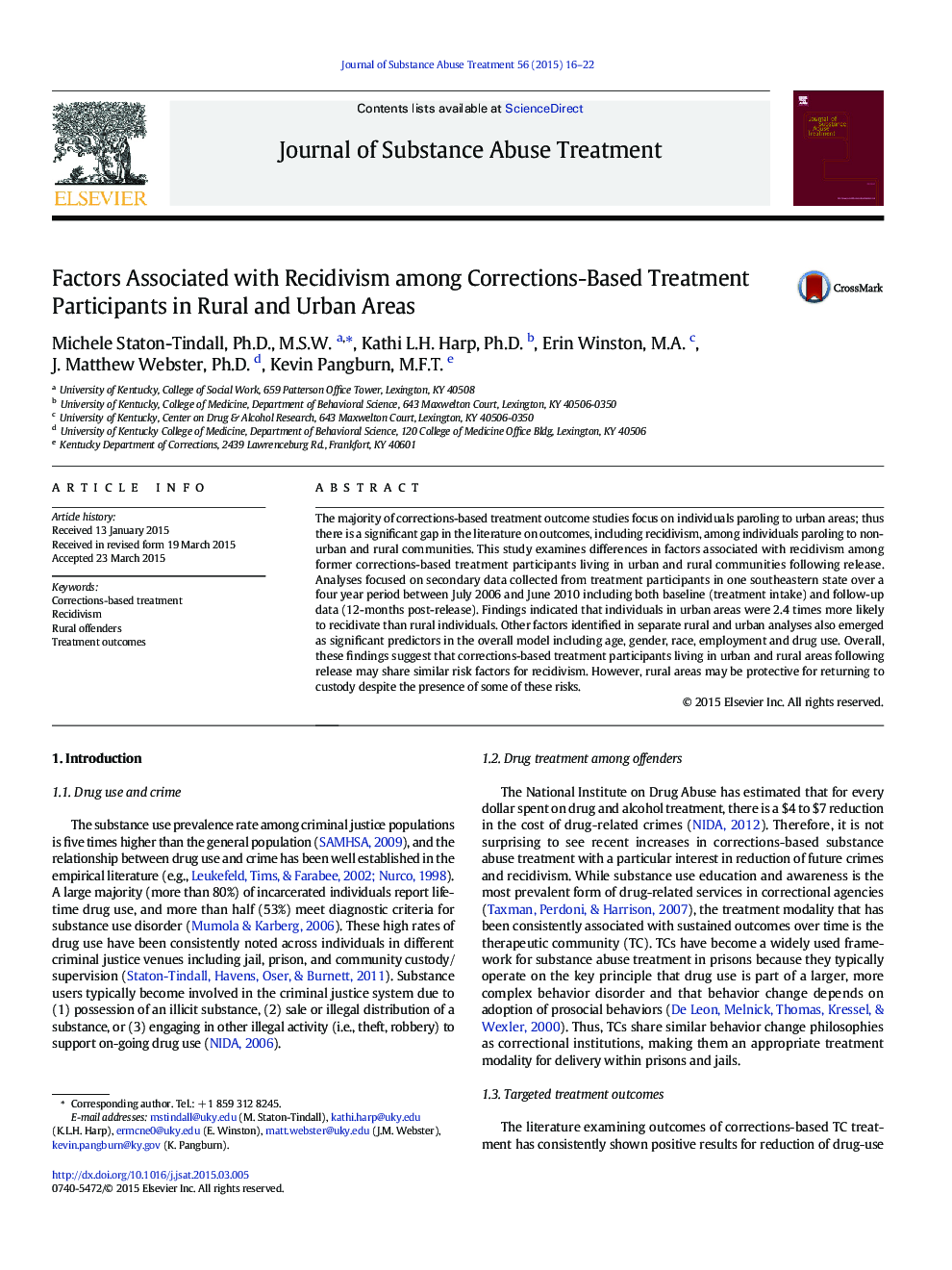| Article ID | Journal | Published Year | Pages | File Type |
|---|---|---|---|---|
| 329672 | Journal of Substance Abuse Treatment | 2015 | 7 Pages |
•This study examines recidivism factors among former corrections-based treatment participants living in urban and rural communities.•Individuals in urban areas were 2.4 times more likely to recidivate than rural individuals.•Other significant predictors of recidivism included age, gender, race, employment and drug use.•Findings suggest that corrections-based treatment participants living in urban and rural areas following release may share similar risk factors for recidivism.•However, rural areas may be protective for returning to custody despite the presence of some of these risks.
The majority of corrections-based treatment outcome studies focus on individuals paroling to urban areas; thus there is a significant gap in the literature on outcomes, including recidivism, among individuals paroling to non-urban and rural communities. This study examines differences in factors associated with recidivism among former corrections-based treatment participants living in urban and rural communities following release. Analyses focused on secondary data collected from treatment participants in one southeastern state over a four year period between July 2006 and June 2010 including both baseline (treatment intake) and follow-up data (12-months post-release). Findings indicated that individuals in urban areas were 2.4 times more likely to recidivate than rural individuals. Other factors identified in separate rural and urban analyses also emerged as significant predictors in the overall model including age, gender, race, employment and drug use. Overall, these findings suggest that corrections-based treatment participants living in urban and rural areas following release may share similar risk factors for recidivism. However, rural areas may be protective for returning to custody despite the presence of some of these risks.
